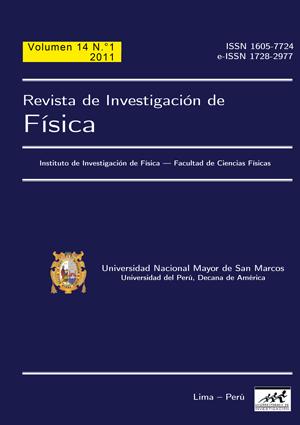A retrospective vision of the first 14 years on superconducting ceramic oxide materials research in the UNMSM
DOI:
https://doi.org/10.15381/rif.v14i01.8542Keywords:
Superconductivity, superconducting ceramics, YBa2 Cu3 O7.Abstract
In April 2011 took place in the world’s first 100 years of the discovery of superconductivity. Super- conductivity has been the focus of fundamental solid state physics, applied sciences and engineering. Today it is possible to use superconducting materials in a first generation of superconducting devices and in the near future in magnetically levitated trains, superconducting wires, quantum computers, new generation mobile phones, new MRI equipment, etc. The group of superconducting ceramic oxide materials belonging to the UNMSM have studied with great interest the YBa2 Cu3 O7 superconducting material, investigating the incorporation of different cations and anions in different atomic sites in the YBa2 Cu3 O7 structure, as well as derivatives of this structure, to understand their structural, chemical and superconducting properties, then proposing new superconducting compounds. We celebrate the first century of the discovery of superconductivity by a retrospective view of our results in the first 14 years of research.Downloads
Published
Issue
Section
License
Copyright (c) 2011 J. C. González, L. De Los Santos Valladares, A. Osorio, J. Flores, A. Bustamante

This work is licensed under a Creative Commons Attribution-NonCommercial-ShareAlike 4.0 International License.
THE AUTHORS RETAIN THEIR RIGHTS:
a. The authors retain their trademark and patent rights, as well as any process or procedure described in the article.
b. The authors retain the right to share, copy, distribute, perform and publicly communicate the article published in the Revista de Investigación de Física (for example, place it in an institutional repository or publish it in a book), with an acknowledgment of its initial publication in the Revista de Investigación de Física.
c. The authors retain the right to make a subsequent publication of their work, to use the article or any part of it (for example: a compilation of their works, notes for conferences, thesis, or for a book), provided that they indicate the source. of publication (authors of the work, journal, volume, number and date).






